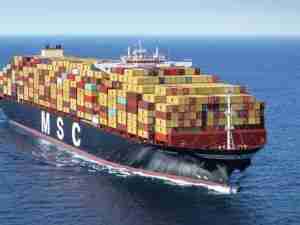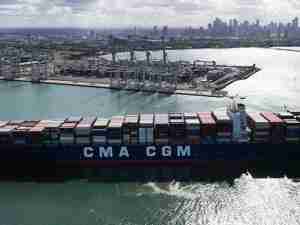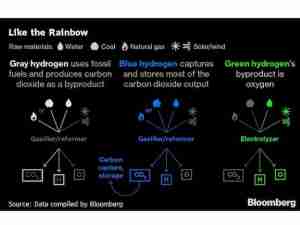The number of barges plying 12,000 miles of US rivers rose in 2006 for the first time in eight years, according to an annual study published earlier this year. Barge numbers rise and fall for a variety of reasons, but industry experts say the increase last year reflects a long-term trend toward booming traffic on rivers. This trend could lead to continued rises in cargo, updates in antiquated infrastructure, higher profits for carriers and increasing rates for shippers.
Dan Mecklenburg, senior vice president of human resources and chief legal officer for Ingram Barge Company, said the long-run projection for growth in inland waterways barge traffic, about 625 million tons in 2004, is about 1.5% a year. "That may seem modest, but it will have a very positive effect going forward," he told the AJOT.
The barge fleet -- which serves the Mississippi River system, its connecting waterways and the Gulf Intercoastal Waterway -- steadily fell from a peak of about 23,000 in 1988 to a low of about 20,600 in 2005. All of the increase in 2006 came in open barges, which haul coal and other similar bulk products, and tank barges, which handle crude oil and other liquid goods. The number of covered vessels that transport grain, oilseeds, steel and similar commodities declined slightly. The total turnaround was a modest 27 vessels, according to the Barge Fleet Profile published by Informa Economics. But Informa Senior Vice President Ken Eriksen noted, "In 2006 it was the first time in a long while that we see the number of barges actually go up."
Much of the slump from 1988 to 2006 came because carriers ordered large numbers of barges when they expected trade in grain would surge, Eriksen said. But the big increase did not materialize, leaving carriers stuck with an overhang of barges. Eventually the surplus was bound to unwind as barges were retired, and total numbers might edge up even if traffic did not show a long-term increase. However, the rise in the fleet in 2006 also results from a number of powerful positive trends.
"Transportation has been tight by rail," Eriksen said, "and there's been some shift from grain shipment by rail to the Northwest to barge service to the Gulf." Barges also offer lower costs that have attracted shipments in crude oil, gasoline, coal and other products away from rail carriers, he said.
The increase in demand for barge transportation is reflected in big leaps in Informa's "pressure index." This scale compares the supply of barges to demand for barge shipments. "If the index rises, that means there are fewer barges and/or more demand," Eriksen said. The pressure index for covered barges doubled in the last four years and tripled for open barges.
The index for tank vessels rose by one-third since it was launched earlier this year.
Healthy rates
Carriers enjoy this surge in demand in the form of higher rates. "Some of our guys (members) talk about lack of equipment," said Barry Palmer, president and CEO of trade organization Waterways Council, Inc. "That translates into higher rates, which is good for the industry."
Mecklenburg, who is also first vice president and general counsel for the Waterways Council, told the AJOT, "The industry as a whole continues to see healthy rates. The year 2006, frankly, was the strongest we've seen in a long time. This year appears to be moderating. We expect 2008 and beyond to be strong." Shippers, of course, are not so happy to see rates rise, but industry sources insist that inland waterways still offer cost advantages.
Kirby Corporation, a publicly traded tank barge company, has taken advantage of increasing rates to post record earnings for the last 13 quarters. "As long as the US economy is good, tank barge traffic remains robust," said Kirby vice president and spokesman Steve Holcomb. And it's not likely a major increase in the number of barges will emerge to relieve the pressure on rates, he said. The Jones Act requires that barges be built in the US. Manufacturers can make ab









